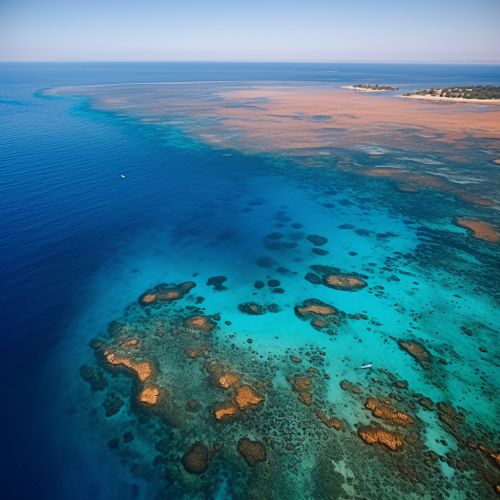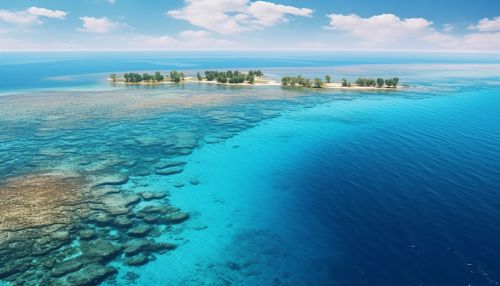Red Sea
Geography
The Red Sea is a seawater inlet of the Indian Ocean, lying between Africa and Asia. Its connection to the ocean is in the south through the Bab el Mandeb strait and the Gulf of Aden. To the north lie the Sinai Peninsula, the Gulf of Aqaba, and the Gulf of Suez (leading to the Suez Canal). The Red Sea is a Global 200 ecoregion.


Geology
The Red Sea is one of four seas named in English after common color terms — the others being the Black Sea, the White Sea and the Yellow Sea. The direct translation of the Greek Erythra thalassa (Ερυθρὰ Θάλασσα) is Red Sea.
Hydrology
The Red Sea is one of the most saline bodies of water in the world, due to high evaporation. Salinity ranges from between approximately 36 ‰ in the southern part because of the effect of the Gulf of Aden water and reaches 41 ‰ in the northern part, due mainly to the Gulf of Suez water and the high evaporation. The average salinity is 40 ‰. (Average salinity for the world's seawater is ~35 ‰ on the Practical Salinity Scale, or PSS; that translates to 3.5% actual dissolved salts.)
Biodiversity and ecology
The Red Sea is home to more than 1200 species of fish, 10% of which are found nowhere else. This also includes 42 species of deepwater fish.
Human aspects
The sea is known for its spectacular reefs and drop-offs, its clear blue waters are famous for their visibility. Many species of fish and invertebrates are endemic to the Red Sea, making it a unique location for diving. Various types of stony coral are found in abundance.
